| Umělec 2001/3 >> Scott`s Film Column | Просмотр всех номеров | ||||||||||||
|
|||||||||||||
Scott`s Film ColumnUmělec 2001/301.03.2001 Scott MacMillan | news | en cs |
|||||||||||||
|
"There is much talk today about the so-called “Dogme” school of filmmaking, in which extraneous music, violence and props are kept to an austere minimum, the idea being to strip cinema down to its bare essence: actors performing a screenplay in front of a strategically placed camera. That should be enough, adherents say, to capture whatever it is you’re trying to capture.
Standing in opposition to Dogme, as Dionysus to Apollo, is the spaghetti western. Operatic in style, the actors serve as mere stand-ins for heightened emotional states, gestures nothing more than signifying tropes in a non-verbal fairy tale. The spaghetti western is an influential style of filmmaking first developed by Italian directors who shot their movies during the 1960s and 1970s in Spain, or other European locations, about the American West. The movies were typically marked by violence, morally ambiguous heroes with no names, music by or in the style of composer Ennio Morricone and, of course, the final shootout between the male protagonists. The king of the spaghetti western was director Sergio Leone. Although there were as many as 800 spaghetti westerns made, most of them imitated his idiosyncratic and overblown style. The genre seems to have begun and ended with Leone and his meager output of six significant films. Since Leone’s first western in 1964, A Fistful of Dollars (the first in the so-called “Dollars Trilogy,” Clint Eastwood’s vehicle to stardom), the spaghetti western has come to define an entirely new way of telling stories on celluloid. Clint Eastwood plays a rogue gunslinger, “the man with no name,” in each of the “Dollars” movies — Fistful was followed by two films made in 1996, For A Few Dollars More and the The Good, the Bad and the Ugly, considered Leone’s masterpiece. In each, the same shadowy persona enters a Western frontier town and generally wrecks havoc with nothing but a dangerously individualistic moral compass and a six-shooter. One can talk about the content of these films, about how the distinctive mix of violence, nihilism and distrust of authority and traditional “hero” figures all resonated with youth in Europe and America in the 1960s. The solitary hero living by his own code was a new creation then. When his films made it to America, it was as though Leone, directing with complete ignorance of the accepted rules of Hollywood, cut down John Wayne and the heroes of the classic Western, in much the same way that the ambiguities of the Vietnam War felled Americans’ image of the glorious G.I. from World War II. One can also talk about how Leone and the spaghetti westerns stand as successors to Karl May, modulating the long-held fascination of Europeans with the myth of the American West. Leone’s biographer, Christopher Frayling, says the director’s love-hate relationship with America grew out of his boyhood memories of the American invasion of Italy. Then there is the hero, virtually embodied in the persona Clint Eastwood built around himself in his subsequent acting and directing career: the man with no name, the loner standing against institutional authority with his own moral code, representing bare, alienated masculinity. But none of that is very interesting. What really makes the spaghetti western such a powerful and compelling style is not the content, but the directors’ work with image and music. To be sure, it’s not the story that matters — which is why you’re reading no synopses here — but rather the way the story is told. In interviews, Leone’s screenwriter Luciano Vincezone seems almost embarrassed to talk about his work, which he does not consider serious. He claims to have written For A Few Dollars More in a mere nine days, and The Good, the Bad and the Ugly in 11. Drawing on Akiro Kurosawa’s work (A Fistful of Dollars is a shameless retelling of Kurosawa’s Yoyimbo, made just three years earlier) Leone perfected — and made acceptable — the usage of dramatic and, at times, bombastic emotional peaks in his work. The result was something unlike anything seen before, at least in popular Western cinema. To begin with, there was the music. Morricone, the composer of the music for all Leone’s films, would often write and record the music first, prior to production, and the director would literally shoot according to the tune. This was the case with the final 20 minutes of The Good, the Bad and the Ugly: the three men in the final shoot-out “act” along to the score. The music was played on the set itself. Score and substance became so intertwined that at times, Leone mixed diagetic music — that is, sounds that exist within the “world” of the film itself — with non-diagetic music, a trick almost never seen in cinema even today. In Once Upon a Time in the West, the man with no name goes by Harmonica, because of the instrument he plays throughout the film. This was not in the original script. Leone added the harmonica after Morricone wrote a score featuring the instrument. Such an approach, of course, risks relegating the director himself, and not just the screenwriter, to the role of mere librettist. Yet to call the spaghetti western a filmic opera is not to say that the music is all, although it does play a paramount role; it is rather that these films show a deliberate privileging of form over content. Leone brings an overwrought lyricism to the mise en scene: Wide shots of desperate expanses of the West clash with facial close-ups of the antagonists. All the important elements of the Leone style, in fact, can be read in the first 15 minutes of A Fistful of Dollars. The camera establishes the character of Clint Eastwood as an angry drifter isolated from society — not an unemotional creature, as illustrated by the non-verbal relationship he forms with a woman named Marisol, but not your average bloke either. On his way into town, he passes a condemned man inexplicably being carried in the opposite direction on a mule. He turns to face the back of the condemned man and sees a sign that reads “Adios Amigos.” Clint Eastwood, the frame drawn close to his face, touches the brim of his hat. That’s all. All this before a word is spoken or a gun is fired. Leone’s influence has been enormous. Not only did scores of Italian directors follow suit with cheaply made flicks in imitation of his style, but a new generation of American filmmakers such as Francis Ford Coppola and Martin Scorcese looked to him rather than John Ford as the flag-carrier for the violent side of the American dream. His style has influenced everyone from Hollywood’s current spate of action directors to contemporary directors typically relegated to art-house cinema, such as Hong Kong’s Wang Kar-Wai. The films’ titles conceal nothing. Two of the films in Leone’s second trilogy are called Once Upon A Time in the West and Once Upon A Time in America. These are fairy tales, deliberately calculated to set previous fairy tales on their heads. The spaghetti western, like all other genres, is defined by convention: careful synchronization of image and sound builds to the final shoot-out -a crucial element, even when it’s not necessary to the plot. If Leone’s style of filmmaking momentarily slips into sentiment or schlock, the payoff is worth it. Scott MacMillan can be reached at scott@ok.cz. "
01.03.2001
Рекомендуемые статьи
|
|||||||||||||
|
04.02.2020 10:17
Letošní 50. ročník Art Basel přilákal celkem 93 000 návštěvníků a sběratelů z 80 zemí světa. 290 prémiových galerií představilo umělecká díla od počátku 20. století až po současnost. Hlavní sektor přehlídky, tradičně v prvním patře výstavního prostoru, představil 232 předních galerií z celého světa nabízející umění nejvyšší kvality. Veletrh ukázal vzestupný trend prodeje prostřednictvím galerií jak soukromým sbírkám, tak i institucím. Kromě hlavního veletrhu stály za návštěvu i ty přidružené: Volta, Liste a Photo Basel, k tomu doprovodné programy a výstavy v místních institucích, které kvalitou daleko přesahují hranice města tj. Kunsthalle Basel, Kunstmuseum, Tinguely muzeum nebo Fondation Beyeler.
|







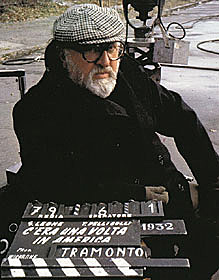


















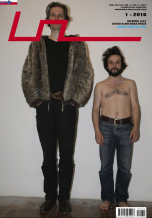
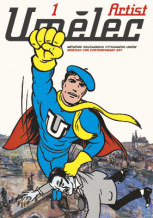
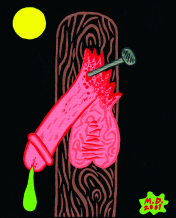
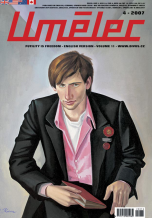


 New book by I.M.Jirous in English at our online bookshop.
New book by I.M.Jirous in English at our online bookshop.
Комментарии
Статья не была прокомментированаДобавить новый комментарий